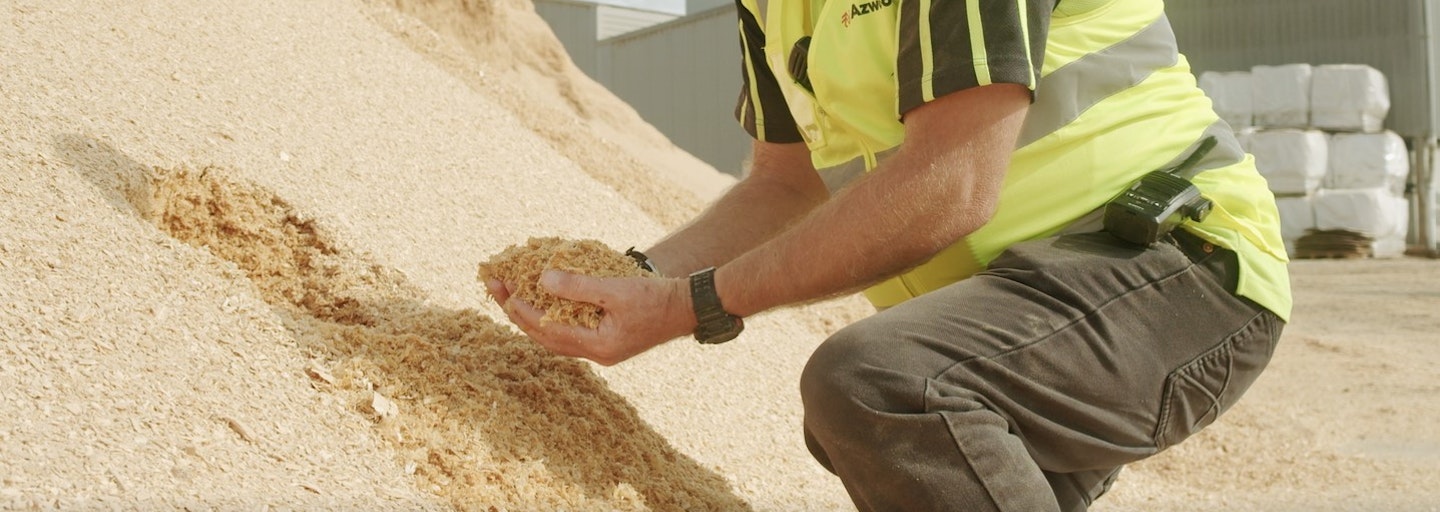Natural animal bedding for your animal’s health: Azwood’s animal bedding
100% natural animal bedding will keep your livestock and animals warm and healthy over winter.
Why isAzwood’s animal bedding the best choice for your animals?
It’s 100% natural
All our animal bedding options are 100% natural untreated wood residues sourced from New Zealand forests. Azwood partners with local forestry and councils to clear slash and debris which we grind down and produce natural animal bedding. All of Azwood’s products are made from natural wood residues that would otherwise end up in landfills or dump sites.
Biodegradable and renewable
Azwood’s animal bedding range is made from 100% untreated wood residues; sawdust, wood chip, and blends which makes them biodegradable and renewable, so they’re an excellent choice for animal owners looking for a natural option.
Indoor and outdoor applications
All of our natural animal bedding options suit both indoor and outdoor applications including; composting barns, wintering barns, calf sheds, stand-off pads, piggeries, stables, and wintering pads.
Comfortable and absorbent
A very important aspect of any option of animal bedding is its comfort and absorption properties to provide long-term care for your animals. Azwood’s range of animal bedding offers both comfort and highly absorbent options ensuring your animals stay comfortable and dry for the entire season. Read how Raine Farms utilised Azwood’s animal bedding for their new composting barn.
Sawdust
Azwood’s sawdust bedding product offers benefits that go beyond just providing a cost-effective and comfortable bedding surface for animals. Sawdust is made from high-quality, clean, and untreated repurposed sawdust making it an environmentally friendly option.
It is the perfect choice for those who want to provide their animals with a comfortable and secure home. Whether you’re looking for bedding for your farm animals or undercover animal shelters, sawdust is a great choice.
Recommended for indoor application
Piggeries
Stables
Composting barns
Barnmatt
Barnmatt bedding is made from a blend of repurposed wood chips and sawdust sourced from local sawmills. It is an eco-friendly all-around bedding option for indoor applications including.
Azwood’s Barnmatt bedding has excellent absorption capabilities ensuring your animals stay comfortable and dry for the long term.
Recommended for indoor application
Composting barns
Wintering barns
Calf sheds
Woodmatt
Woodmatt is a durable animal bedding option that promises comfort and versatility for both indoor and outdoor applications. Made from repurposed forestry residues, this resilient animal bedding is not only eco-friendly but also provides excellent drainage and comfort to your animals.
With Azwood’s Woodmatt, you can rest easy knowing your animals are sleeping on a comfortable and safe surface that is gentle on their skin and joints.
Recommended for indoor and outdoor application
Composting barns
Stand-off pads
Wintering pads
Premium Wood Chip
Premium Wood Chip animal bedding was crafted to provide your animals with a natural, clean, and consistent bedding surface that promotes their health and comfort. Made from a clean wood chip base, this bedding offers excellent drainage properties to keep your animal’s living quarters dry and hygienic.
Recommended for indoor and outdoor applications
Undercover animal shelters
Outdoor areas
Calf sheds
Stand-off pads
Composting barns
Get in touch
If you’re looking for a natural bedding option for a clean, dry, and comfortable winter for your animals
Contact our teamRelates articles

Follow us
More from Azwood
Connect with us on social media to learn more and be the first to hear our latest industry updates

